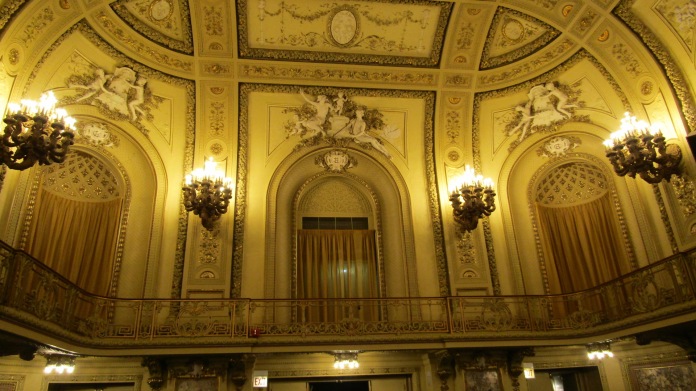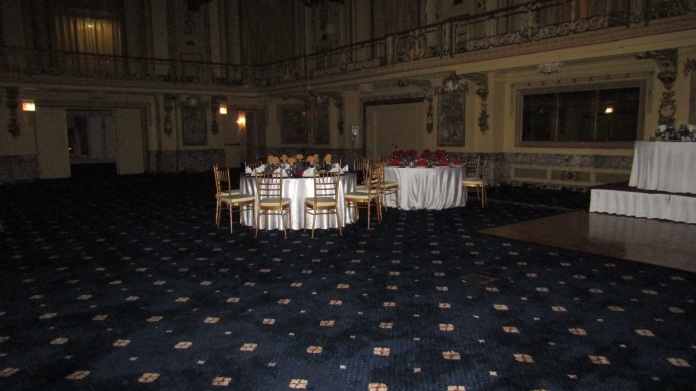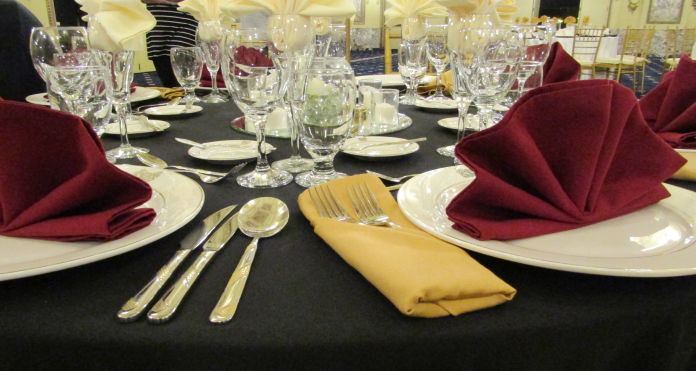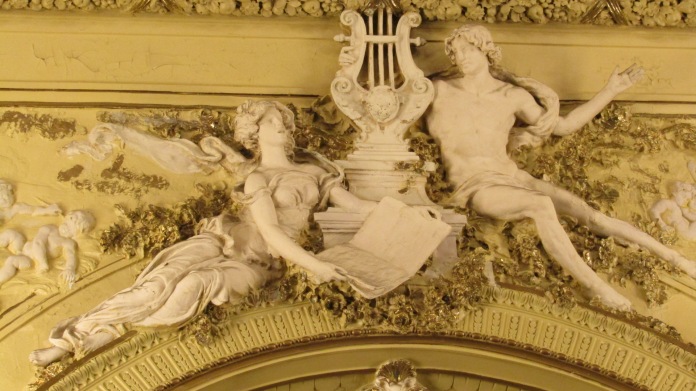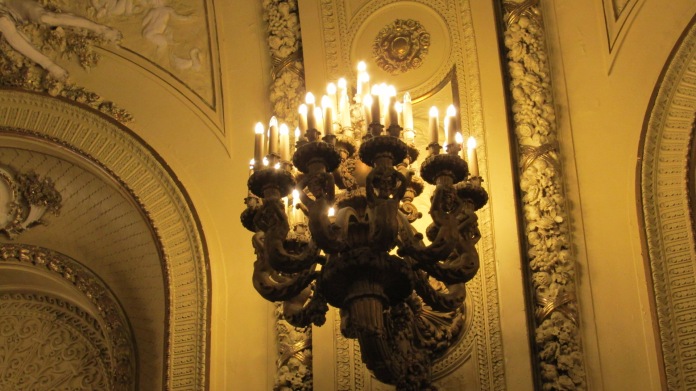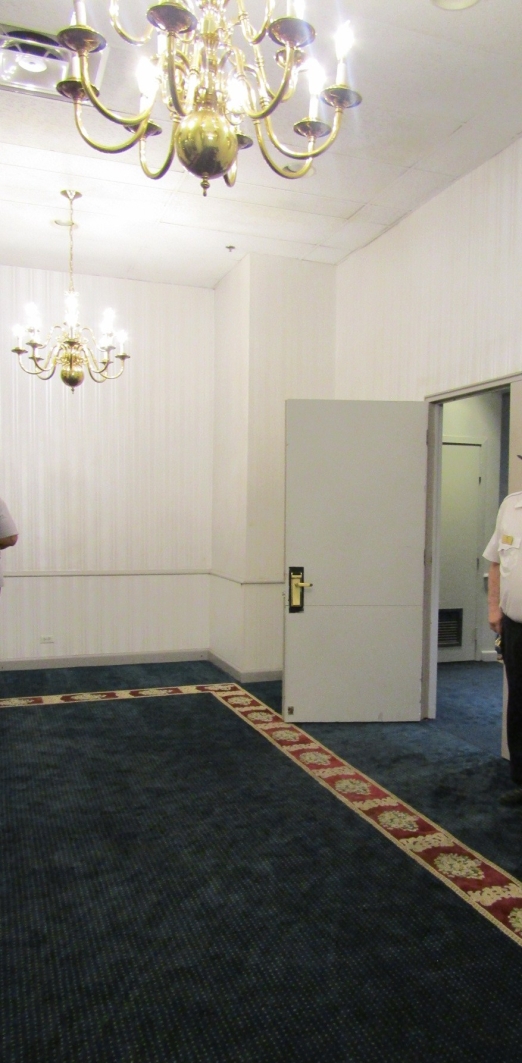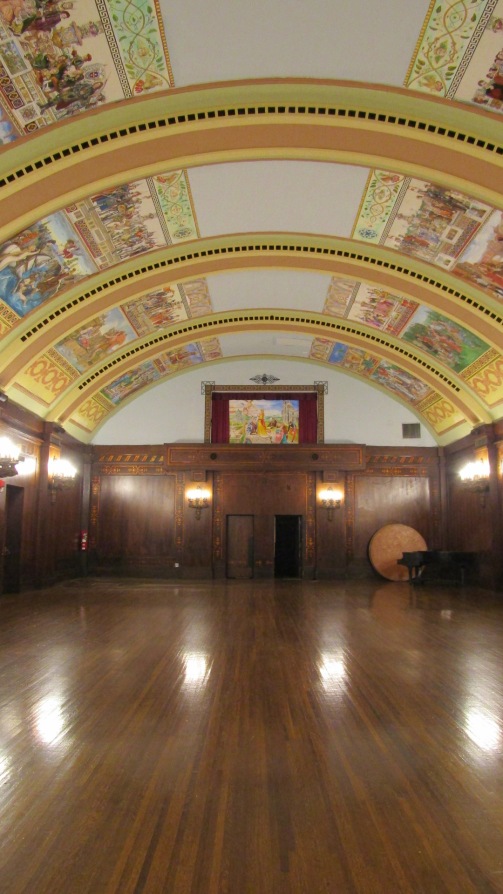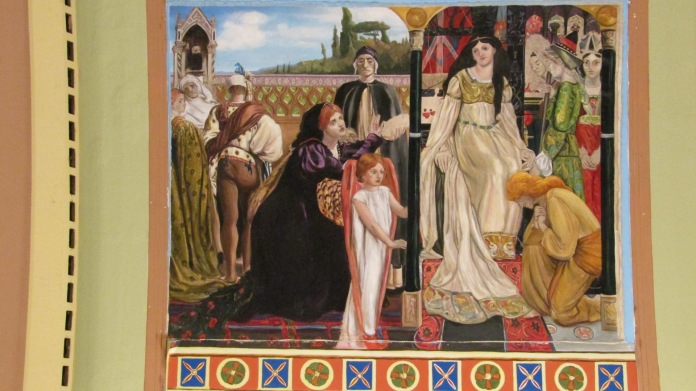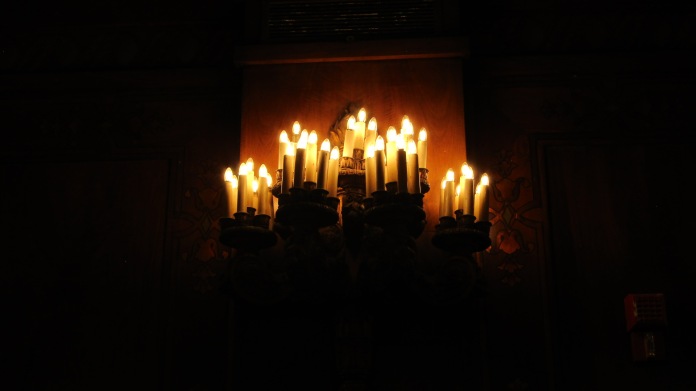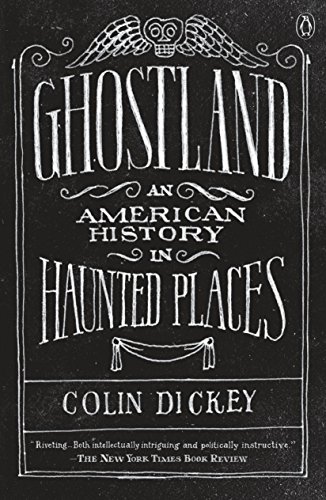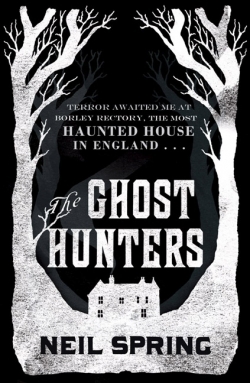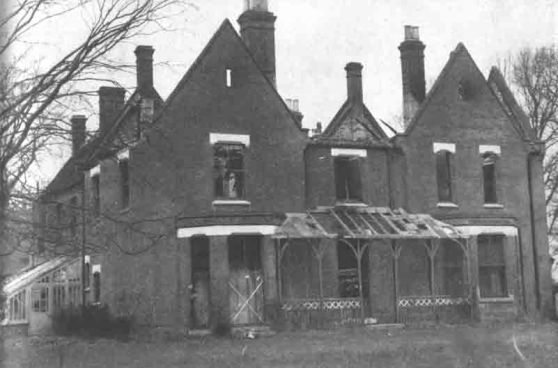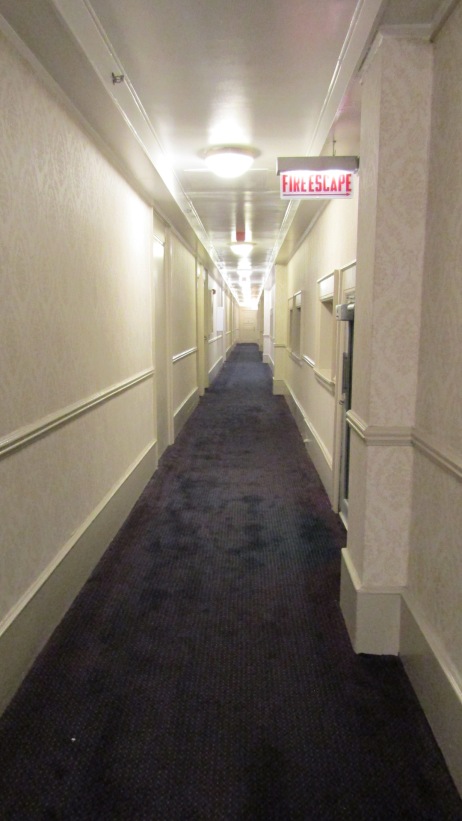
“Room service? Send up a larger room.”
– Groucho Marx
(Part I here)
This is a typical upper-floor hallway at the Congress Hotel. If you even glance at it, you’ll notice two things: one, it contrasts drastically with the elegance of the lobby, and two, the twins from The Shining are missing. It’s easy to see solely from this picture how people have gotten it in their heads that this place is haunted. It’s a truly labrynthine building, constructed in a rigid U shape so that windows that hug the inside of the structure’s legs look out onto the windows of its parallell rooms. The Congress is a living cliche, Stephen King and Hitchcock and every other master of horror rolled into one.
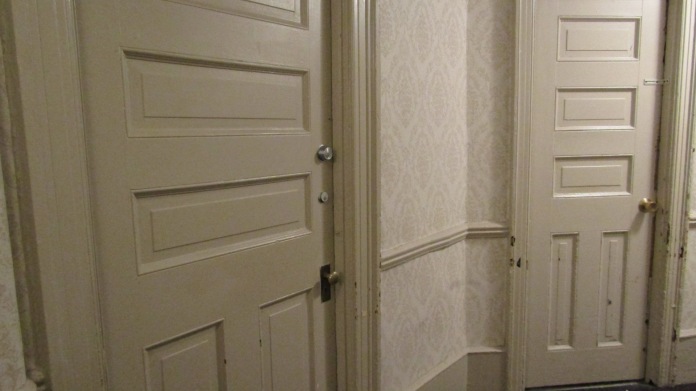
Some of its scariest features arise from mere suggestion. Several rooms have been permanently “retired,” their key-card locks replaced with doorknobs and reinforced with deadbolts. The staff, although disgruntled with the hotel’s lore, remains reticent about the reasons for putting such rooms out of commission. If you ask any higher-up or employee who’s been there for a while for an answer, they clam up and smile. Not surprisingly, this method of fielding visitor questions only exacerbates the creation of ghost stories. Paranormal guides will tell you that the rooms are no longer in use because they’re so haunted there was nothing left to do but lock them up. We, however, got the sneaking suspicion that the poor old Congress is starting to disintegrate, and some rooms are so hazardous and deteriorated that management just decided it would be cheaper to put an extra lock on them and call it a day.
This, however, doesn’t account for the case of Room … yeah, you guessed it, 666. If you’re walking down the sixth floor corridor, you will pass 664, a large, blank wall, and then 668. It’s not that there is no Room 666; legend has it, it’s still there … under the wallpaper. If you run your hand along the wall, you can clearly feel one side of the door frame, then the other. The door lintel is still there, too, centered between the two bumps that mark the molding around the door frame. The security guard told us that the window washers are the only ones that can see in these days, and that the furniture is still there, right where they left it in the 70’s or 80’s. The real answer is probably more underwhelming. It’s likely that Room 664 is a large office. Hotel management does seem to go in and out of it. In keeping with my previous theory that some of the rooms have been closed off rather than renovated, I think poor 666 just got a lazy wallpaper job.
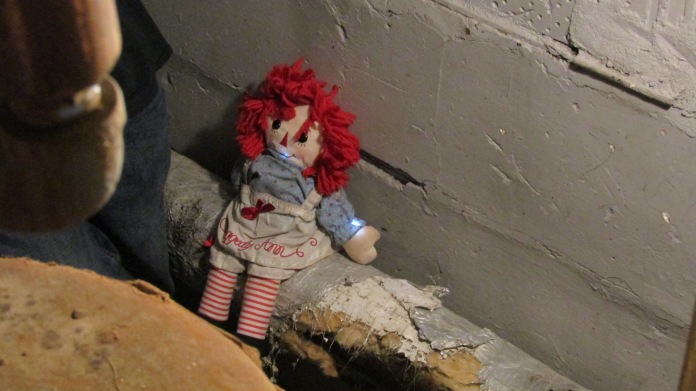
Due to staff’s laissez faire attitude, several rooms that should be locked are often wide open. Those include this rather creepy boiler room (?), complete with a rickety wooden staircase that goes up to the hotel’s roof. Our guides told us that an angry male spirit resides here. Of late, he’s been cussing at one of the female investigators. While the guides tried to contact him using this Raggedy Ann doll with an EMF reader inside it, I was encouraged to go up the staircase.
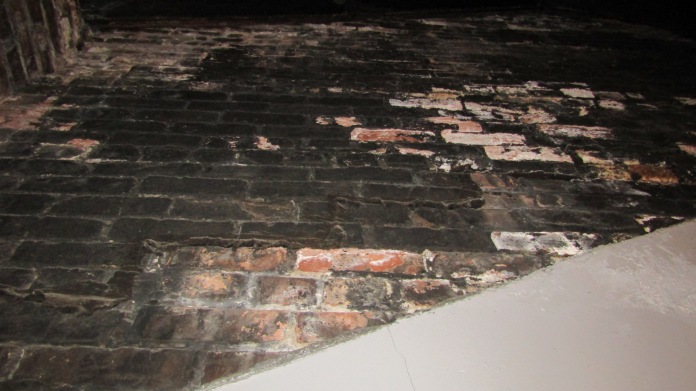
At first, I was hesitant to go, but then realized that I was probably in as much danger of an angry man harassing me in public as I would be if I climbed the haunted stairs. I did not find any male ghosts up there. However, the brickwork at the top showed obvious signs of fire damage. Why? I don’t know. There are a lot of things that the Congress isn’t telling.
As the rest of the group turned to leave, I realized that I didn’t want to be the last one down the stairs. I voiced this aloud. One of the guides said, “That’s funny. That’s exactly what our female investigator said.”
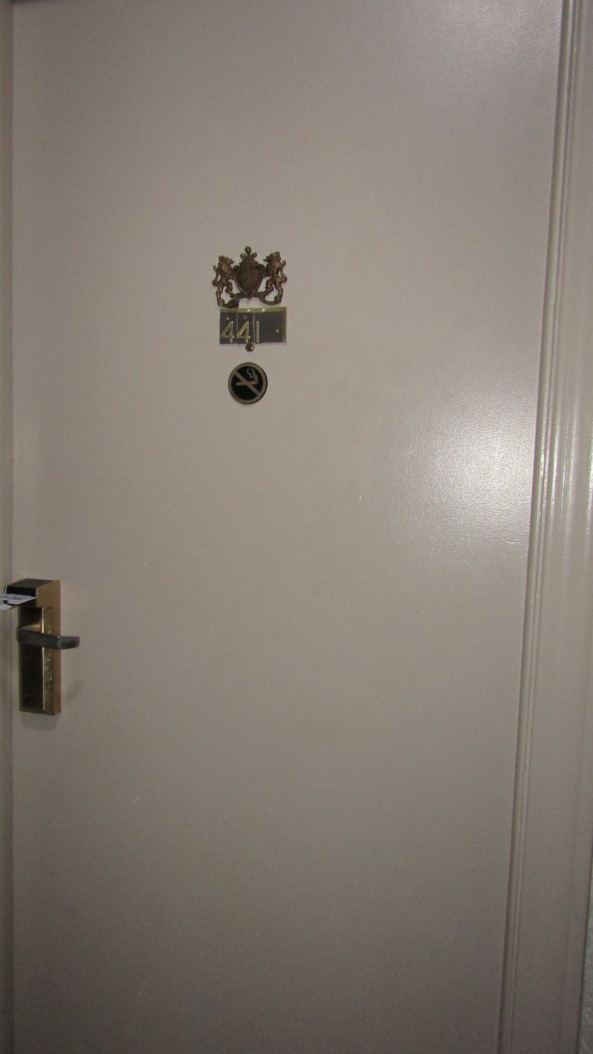
So, you’ve probably gathered by now that I’m not sure most of the stories surrounding the Congress are true. Room 441, however, is a bit of an enigma for me. There is no particular incident, such as a suicide or murder, attached to this room. But over the years, stories of a nameless female entity have made 441 the hotel’s most infamous room.
The story itself is simple: if you stay in 441, chances are you will be awoken in the middle of the night by a woman approaching the foot of your bed from the direction of the bathroom. She will then violently begin to shake the mattress. Sometimes she will whisper in your ear. Hotel staff receives calls from upset guests in 441 so frequently that they’ve come to accept it as routine. Jack, the security guard, said that he had “a couple of Navy guys” who were staying in 441 “come running down the hallway in their skivvies” at 3 am, demanding a cab and that their belongings be sent to them at another hotel. Once, he found a woman so frightened that she was curled up crying in the room’s small closet. A man angrily reported to the front desk that someone had come into his room in the middle of the night and stolen his shoes. He had not left 441 all night and claimed he had taken them off and set them by the end of the bed, just as he did every evening at home. They were found on the sixth floor.
Whether Jack was lying or telling us the truth, it’s a shame he hasn’t written a book. As I mentioned in the previous post, some of the details are so silly, so specific, and so cliche all at once that one wonders how these stories could have possibly been fabricated. Why the story about the shoes? It doesn’t really fit with the more popular tales about the shadow woman, and it’s one of the less interesting anecdotes Jack had to share with us. Moreover, since the faces behind the hotel don’t encourage the spreading of these stories, why does every staff member you ask have an immediate response about someone asking them personally to be moved from this room? It’s almost as if they’re warning guests in advance because they’re truly shaken and don’t want to end up dealing with it themselves later. You can read a ton of people’s personal experiences with Room 441 through a simple Google search, but one of the most notable and objective of these comes from Demented Mitten Tours’ blog. This person stayed in 441 while traveling through Chicago (they’re in Michigan, so if you’re in town and want to explore the darker side of that state, sign up for one of their many tours) and had about as much of a mixed experience with the Congress as I did.
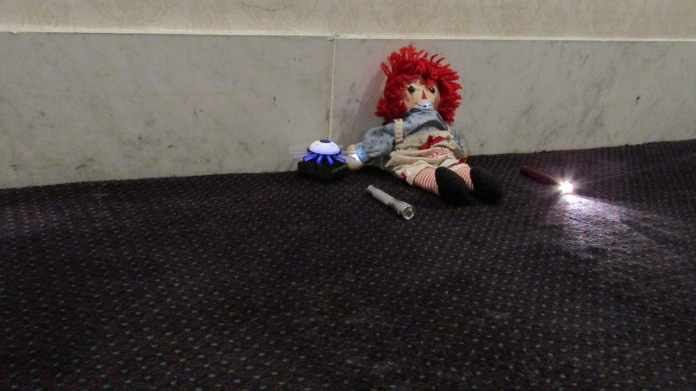
Outside of 441, we asked this entity yes or no questions using flashlights that were placed just between their on and off settings. What? Oh, you’ve seen Buzzfeed Unsolved and you know that this trick is easily explainable because science? Well, I’m not going to sit here and deny facts, so cool your jets. I’m not the President of the United States.
What I did find interesting, though, is the timing with which the lights switched on and off outside of 441. We asked the entity several questions with nary a response. Sometimes long silences occurred as we waited for something to happen. Here are some examples of our inquiries to the spirit:
“Are you lonely?”
“Did something happen to you here?”
“Are you vengeful and angry?”
“Do you shake the bed because you’re trying to send a message?”
On and on and on. Until one of the investigators asked this question:
“Do you like scaring people?”
The flashlight did not flicker or gradually come to life, but turned on as if someone had suddenly flipped the switch. And stayed on. An excited murmur traveled through us. There was a moment of silence while we considered what to ask next. Then came:
“Do you want people to get out of your room and leave you alone?”
Flashlight off.
I know it has something to do with the reflector heating up and cooling off, but you can’t buy that careful timing. Is this a lesson in how easy it is to assign meaning to coincidence? Or is it more? I’m a staunchly reasonable person, but like many of us, I find myself unable to let go of the hope that there is something more for us to discover than science can understand.

In the final part of this series, we’ll explore some of the Congress’s private ballrooms, where spirits reportedly disrupt $30K weddings and send actors and actresses running.
I have tiptoed into the 21st century and signed up for a @macabrelibraria, but you can pry my CD’s from my cold, dead hands.
-N.
